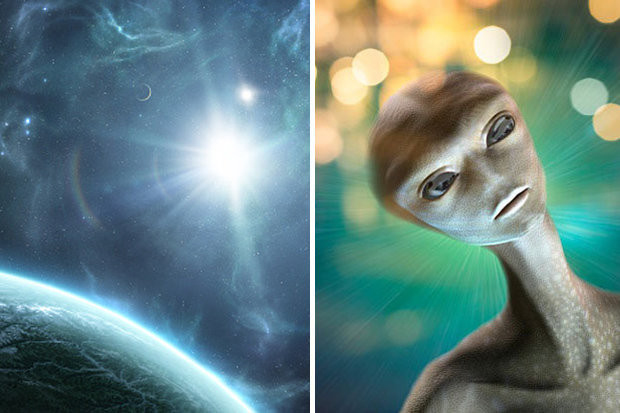NASA: Will find alien life in the next 10 years
The director of NASA's planetary science division, James Green, predicts the possibility that humans will detect alien life right in the solar system over the next 10 years.
"The data we have collected is very promising, making us think about this issue in a new and more interesting way. I believe we are on the right path . Probably life. "We can be alone in the solar system. We may not be alone in the universe," Green said in the November TED Talk program. This information was only released in August.
In the program, Mr. Green explained why NASA believed that people were about to find an answer and that the Solar System was a place where life might exist.

The solar system is a very likely place for life to exist.
Here are four NASA planets believed to have life in the solar system.
Mars
It is difficult to imagine a dry environment, the dusty soil of Mars is the place where life can exist, but NASA has recently demonstrated an ancient ocean, where water was hundreds of millions of years ago. NASA adventurous cars sent to Mars today have not yet found life but there have been signs that Mars was warmer, even wet, billions of years ago. Orbital exploration missions also found that Mars was not as dry as usual.
A few months ago, NASA hinted at finding signs of liquid in the crater on the red planet. Life needs water so there's always hope in Mars. NASA's next plan is to send an explorer to Mars by 2020, with more modern devices to look for microscopic organisms.
Enceladus (Saturn's satellite)
For decades, Enceladus has led experts to question why this object reflects the strongest light in the solar system and its connection to Saturn's belt. Eventually, the Cassini spacecraft discovered spouts that erupted in the southernmost moon of Saturn. These nozzles contribute to the creation of new material for the belt surrounding Saturn, originating from an ocean.
Scientists have discovered the chemical composition of silicon-rich bodies in the E belt. They found that the SiO2 (silica) molecule is super-small, they penetrate the surface water molecules. Enceladus' ice face.
NASA director believes that with the necessary organic materials, there may be life that exists on Enceladus.

The size of the four planets, the solar system satellites are capable of survival compared to the Earth.
Europa (satellite of Jupiter)
The Hubble Space Telescope shows that the southern extremities of Europa - Jupiter's moon-moon moon is considered to contain an underground ocean.
The tidal phenomena caused by Jupiter's gravity and other satellites seem to have generated enough heat for Europa to survive the liquid away from the Sun.
"This is one of the great discoveries because Europa has been in such an environment billions of years ago," said Green.
Titan (Saturn's satellite)
The lake on Titan satellites is almost the same size as the Black Sea. Traces of methane were also found
"If anywhere in the solar system lives unlike us, where water is replaced by solvents, that could only be Titan satellite," Green said.
- NASA has acknowledged the existence of aliens
- Alien life can be found in the next 30 years
- Alien life can be discovered in the next 20 years
- Anonymous claims NASA is about to make an important announcement about alien life
- NASA plans to find alien life near Jupiter
- With this situation, even if we find aliens, we are not sure
- NASA scientist declared
- Will hunt aliens for 25 years
- Published from NASA responds Anonymous: What life there is no alien life
- Tonight, NASA may release information about alien life
- The lake nearly 3 billion years can contain alien life
- Stunned new alien life exploration tool
 Van Allen's belt and evidence that the Apollo 11 mission to the Moon was myth
Van Allen's belt and evidence that the Apollo 11 mission to the Moon was myth The levels of civilization in the universe (Kardashev scale)
The levels of civilization in the universe (Kardashev scale) Today Mars, the sun and the Earth are aligned
Today Mars, the sun and the Earth are aligned The Amazon owner announced a secret plan to build a space base for thousands of people
The Amazon owner announced a secret plan to build a space base for thousands of people